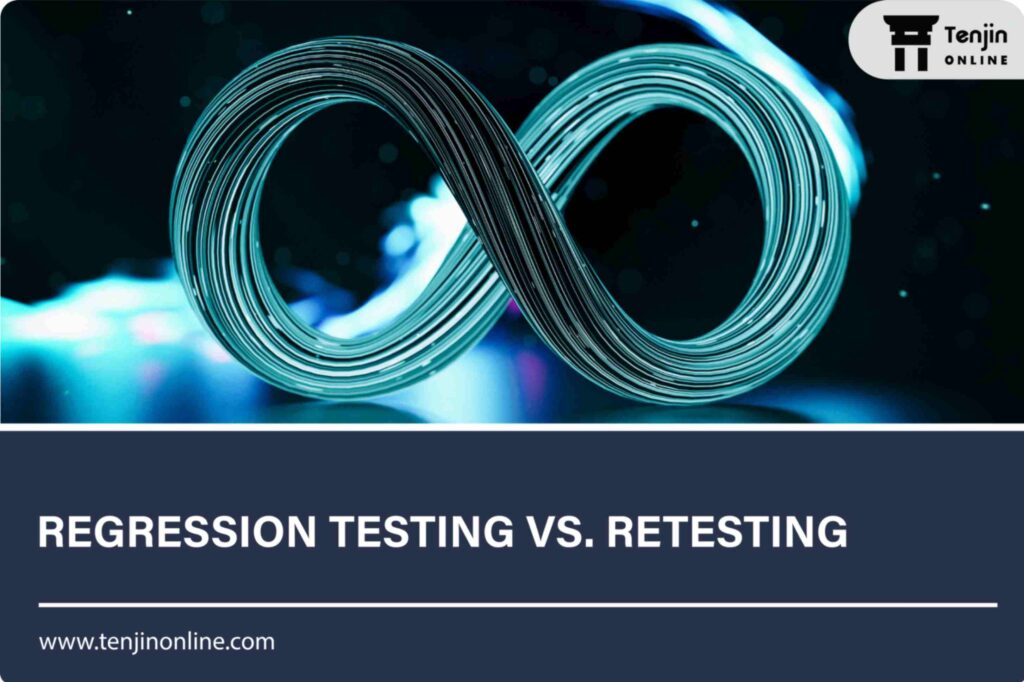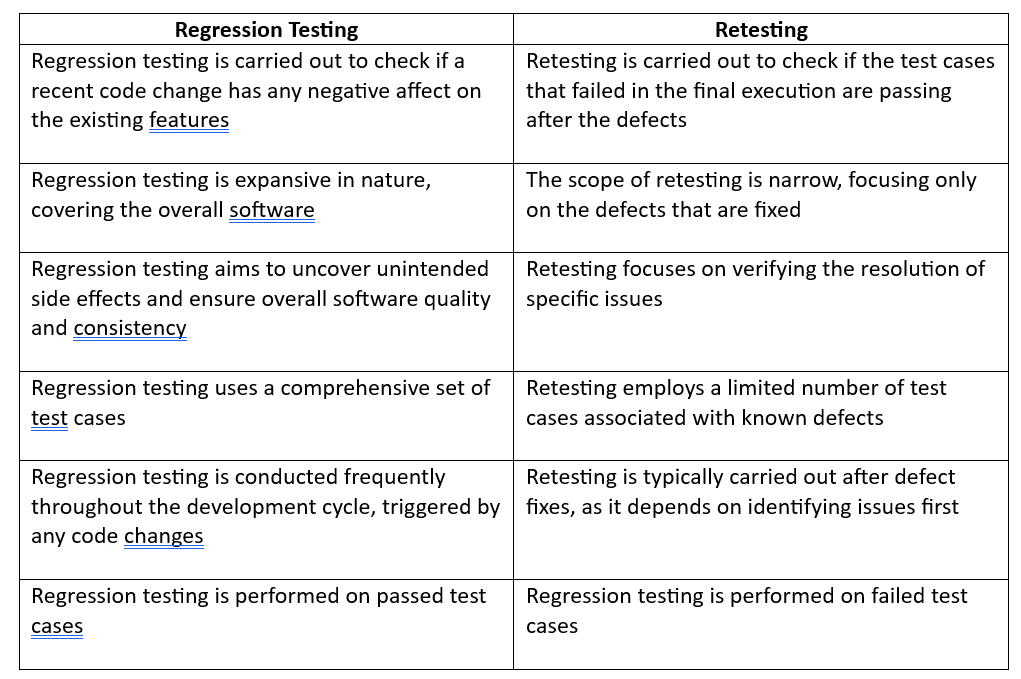
Today, when customers’ preferences are constantly changing, delivering quality software is of paramount importance. Testers include various functional and non-functional testing methodologies to ensure that the software quality is top-notch. Two distinct testing approaches play pivotal roles: regression testing and retesting. These methods help ensure that software remains error free and functions as expected, even as it undergoes continuous changes and improvements.
Both, regression testing and retesting serve the purpose of validating software, however, they differ in their objectives, methodologies, and timing. In this article, we’ll understand the differences between regression testing and retesting and understand their role in improving the overall quality of the software applications.
Understanding Regression Testing
Regression testing is a software testing methodology that aims to verify whether recent code changes have impacted the existing functionality of the software. It’s a comprehensive testing process that involves re-running a broad spectrum of test cases that cover various aspects of the software.
Primary objectives of regression testing
Detecting Regressions: As the name suggests, regression testing is focused on identifying regressions or unintended side effects caused by code modifications. These regressions can occur when new features or bug fixes disrupt the existing functionality of the software.
Ensuring Consistency: It helps in ensuring the consistency of the software by confirming that the new changes don’t introduce new defects or break previously working features.
Continuous Integration: Regression testing is often integrated into the development pipeline and executed whenever code changes are made, thus, ensuring that the software remains stable during its evolution.
Benefits of Regression Testing
Early defect identification: By conducting regular regression tests, development teams can catch issues early in the development cycle, reducing the cost and effort required to fix them.
Ensuring Stability: Regression tests provide a safety net, ensuring that core functionalities remain stable even as new features are introduced.
Improved Code Quality: Continuous regression testing encourages better coding practices, in turn, leads to a higher overall code quality, making future development and maintenance easier.
Time and Cost Savings: Regression testing streamlines the process by catching regressions early, reducing the time and resources required for debugging and maintenance.
Improved User Experience: With regression testing, users are less likely to encounter unexpected errors or disruptions in their workflows, leading to higher satisfaction and trust in the software.
Exploring Retesting
Retesting, on the other hand, is a more focused and narrower testing approach. It involves the selective re-execution of test cases that previously identified defects.
Primary objectives of retesting
Verifying Defect Fixes: The main purpose of retesting is to validate that the reported defects have been successfully fixed. Testers execute the same test cases that initially uncovered the issues to ensure they have been resolved.
Confirming the Specific Issue: Unlike regression testing, which looks at the broader functionality, retesting is aimed at confirming the specific issue reported, making it a crucial step in the defect resolution process.
Limited in Scope: Retesting is not concerned with discovering new defects or changes in the software’s behavior. It focuses solely on the identified issues and their solutions.
Benefits of Retesting
Identifying and Fixing Defects: Retesting helps in capturing and rectifying the issues which was missed out during initial testing, ensuring the software performs optimally and reliably.
Enhancing Software Reliability: Through retesting, developers can address both old and new defects, resulting in improved software reliability. This, in turn, leads to higher user satisfaction and trust in the software.
Supporting Software Maintenance: Regular retesting is essential for smooth software maintenance and evolution.
Cost-Effective Bug Resolution: Addressing software defects after release can be significantly more costly than catching them early in the development process. Through retesting, developers can detect and fix issues in a more cost-effective and timely manner.
Reduced Downtime: Software failures can lead to significant downtime, especially in mission-critical systems or applications. Retesting helps in mitigating the risk of such failures, reducing the potential for lost productivity and revenue.
Difference Between Regression Testing and Retesting

Conclusion
Both regression testing and retesting are essential components of software testing, but they serve distinct purposes and are executed at different stages in the software development process. Regression testing helps ensure the overall stability and consistency of the software, while retesting is all about confirming the resolution of specific issues. By understanding the differences and applying the right testing approach at the appropriate time, software development teams can improve the quality and reliability of their products, ultimately delivering a better user experience.


